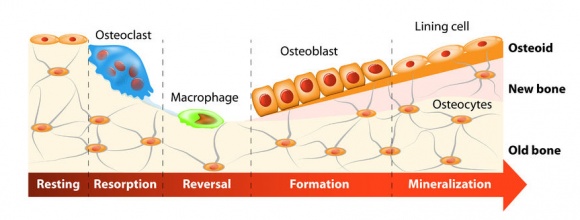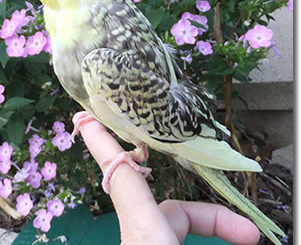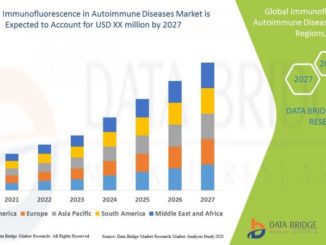
Bone disease known as "osteopathy" the term osteopathy is commonly used to refer to another healthcare philosophy. the bones support the body move, shape and help your body. the Living tissues that rebuild constantly throughout your life. During childhood to your teens, the body adds new bone faster than it removes aged bone. After on age 20, you can drop bone faster than you build bone. To have muscular bones when you are young, and to stop bone loss when you are older.
Need to get sufficient vitamin D, calcium and exercise. You should also keep away from drinking too much alcohol and smoking.
Let's start here telling about types of bone diseases:
- Osteoporosis- A medical situation in which the bones develop into fragile and delicate from loss of tissue, typically as a result of hormonal changes, or deficiency of calcium or vitamin D
- Osteogenesis imperfecta – An inherited disorder characterized by rearward fragility of the bones
- Rickets – A disease of children caused by vitamin D deficiency, characterized by imperfect calcification, softening, and distortion of the bones typically resulting in bow legs.
- Fracture of bone – Fracture, in pathology, a break in a bone caused by stress. Certain normal and pathological conditions may predispose the bone to fracture. Children have relatively weak bones due to incomplete calcification, and older adults, especially women past menopause develop osteoporosis, a weakening of concomitant bone with aging.
- Osteomyelitis – Infection of bone tissue. The disease is most commonly caused by Staphylococcus aureus infectious organism, reaching the bone through the bloodstream or extension of a local lesion; Inflammation continues with cancellous ossicle destruction (porous) and bone, loss of blood supply and bone death
- Osteosarcoma – The most common bone cancer, which mainly affects the long ossicle, particularly the regions knee, hip or shoulder. The cause of osteosarcoma is unknown, but genetic factors and radiotherapy may be involved in its development. Osteosarcoma occurs more often in males than in females; the most affected people are under 30 years.
- Bone disease – Any of the diseases or injuries human human bones. Diseases and injuries of the bones are the main causes of abnormalities of the human skeletal system. Although physical injury, causing fracture, dominates disease, fracture is just one of the common causes of bone disease, and the disease is in fact a common cause of fracture.
- Metabolic bone disease – Any of various diseases causing various abnormalities or ossicle deformities. Examples of metabolic bone diseases including osteoporosis, rickets, osteomalacia, osteogenesis imperfecta, marble bone disease (osteopetrosis), Paget's disease of bone and fibrous dysplasia. In clinical terms, metabolic bone diseases can cause bone pain and loss of height (due to compression of the vertebrae), and predispose patients to fracture.
- Achondroplasia – genetic disorder characterized by an abnormality in the conversion of cartilage into ossicle. Consequently, the bones dependent models of cartilage development, particularly the long bones such as the femur and humerus, cannot grow. Achondroplasia is the most common cause of dwarfism.
- Neurofibromatosis – Any two distinct hereditary disorders characterized by skin lesions and benign tumors, which are enlarged progressively nervous system. Neurofibromatosis type 1, also known as von Recklinghausen's disease is much more common of the two disorders and is present in approximately one of every 3,000 live births.
- Paget disease of bone – chronic disease of middle age, characterized by excessive breakdown and formation of bone tissue. It is a localized disease that can be unifocal, affecting a single bone, or multifocal, affecting many bones or nearly entire skeleton. For this reason, it is included between metabolic ossicle diseases.
- Osteomalacia – Condition in which the ossicle of an adult gradually soften due to inadequate bone mineralization. (In children, the condition is called rickets.) Osteomalacia may occur after several pregnancies or old age, resulting in increased susceptibility to fractures. Symptoms include ossicle pain, weakness, numbness of the limbs.
- Bone cancer – Disease characterized by the uncontrolled growth of ossicle cells. The primary bone cancer, that is, cancer that arises in the bone directly, is relatively rare. In the United States, for example, only about 2,400 new cases of primary bone cancer are diagnosed each year.
- Ewing tumor of bone – This type of bone cancer most commonly appears on the shafts of long bones such as the femur, tibia or humerus, or ribs or flat ossicle. The pelvis, scapula or skull. Related tumors may also develop in soft tissues.
- Marble bone disease – Rare disorder in which the bones become extremely dense, hard and brittle. The disease progresses as bone growth continues; Ossiclee cavities are filled with compact bone. Because increased crowds marrow bone mass, resulting in a reduced amount of bone and therefore a reduced capacity to produce red blood cells, severe anemia results capacity.
- Osteochondroma – Solitary benign tumor that consists of cartilage and ossicle portion. Osteochondroma are common and can spontaneously develop after a trauma or may have a hereditary basis. No treatment is required unless the tumor interferes with the function, in which case it must be surgically removed.
- Osteochondrosis- Temporary orthopedic relatively common disorder in which children epiphysis (end growth) of a bone dies and then gradually replaced over a period of years. The immediate cause of bone death is the loss of blood supply, but the cause of the latter is unclear. The most common form, the flat coxa, or Legg-Calvé-Perthes disease affects the hip.
- Fibrous dysplasia – Rare congenital disorder of development that begins in childhood and is characterized by the substitution of solid calcified bone with fibrous tissue, often only on one side of the body and especially in the long ossicle and the pelvis. The disease appears to result from a genetic mutation that leads to overproduction of fibrous tissue.
- Cleidocranial dysostosis – congenital disorder, characterized by rare inherited clavicles that are absent or reduced in size, cranial abnormalities and abnormal dentition. The shoulders can sometimes play in front of the chest, and certain facial bones are underdeveloped or missing.
- Osteoma- Small, often solitary bone tumor mainly found in the ossicle of the skull. Osteomas generally appear in late childhood or young adulthood; They are often asymptomatic. not become malignant, and treatment (excision) is necessary only if the tumor interferes with normal operation.
- Osteoclastoma – Bone is predominantly at the end of long ossicle in the knee region, but also occur in the wrist, arm and pelvis. Large multinucleated cells (giant cells) found in these tumors resemble osteoclasts, so the name of the tumor. Usually seen in adult women between the ages of 20 and 40, this relatively rare, painful tumor is potentially malignant.
- Bone cyst – Benigno saclike and that is usually filled with fluid. The unicameral ossicle cyst affect the long bones, particularly the humerus and femur, or heel bones in children and adolescents and is often detected as a result of a fracture. Treatment involves removal of the cyst and a bone graft, but spontaneous healing is common.
- Melorheostosis – rare disorder of unknown cause in which cortical bone growth occurs along the main axis of a bone so that resemble drops of candles. Pain is the main symptom, and stiffness and deformity may result. Usually, only one limb and hip or shoulder are affected.
- Callus osteology – In osteology, cartilaginous bone material and forming a bridge connecting through a ossicle fracture during repair. Within one to two weeks after injury, a provisional callus forms, wrapping the fracture site. Osteoblasts, bone-forming cells in the periosteum (the layer where new bone bone occurs) proliferate rapidly.
- Caffey syndrome – An inherited disease of children, characterized by swelling of the periosteum (bone layer where new ossicle is produced) and the ossicle cortex of the arms, shoulder girdle and lower jaw. The disease is accompanied by fever and irritability; After a series of periodic exacerbations, it disappears spontaneously.
- Mandibulofacial dysostosis – A rare genetic disorder, inherited as an autosomal dominant trait and characterized by some or all of the following: underdeveloped cheek ossicle and jaw, widely spaced eyes, malformation of the lower eyelid and lack of eyelashes, malformation of the atrium ear, absence of an external ear canal resulting conductive deafness.
- Fracture dislocation – A serious injury fracture and dislocation simultaneously occur. Often, a loose piece of bone remains jammed between the ends of bones and dislocated may have to be surgically removed before displacement can be reduced.
Treatment Process –
If you have any difficulty in bones, find the best doctor for a consult.
Proudly WWW.PONIREVO.COM
Source by Prachi Tyagi



